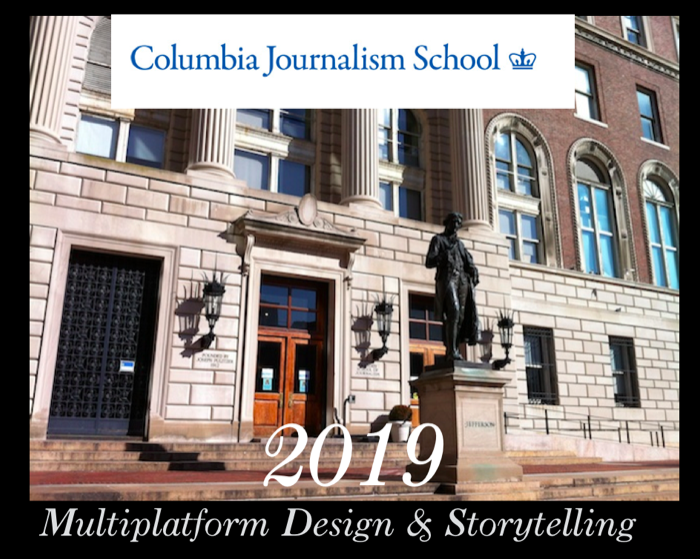
A new semester starts today for me and my students at Columbia University.
My course Multiplatform Design & Storytelling gets a new audience of fresh faced 20-something graduate students all inspired and eager to learn about this fantastic profession that we call journalism. They are always about 22 years old and I am always one year older. It is good to see that a crop of the brightest young people around are still interested in becoming journalists, in spite of the rough time our profession navigates through in the era of “leaders” who call the press the enemy of the people, or the manufacturers of “fake news”.
However, on we move, knowing that the role of journalism has never been more vital to providing checks, balances and investigative reporting that is the key to a democracy.
I have been preparing for today for months now, abandoning the syllabus of the last semester and building a new one that better captures what is happening in the media today.
What’s new?
I always see a great synergy between the “teaching” I do at workshops for professionals worldwide, and my own class at Columbia. One feeds the other. I am thankful to have access to the young minds of students who represent the future. None remembers life without Google. Our class dialogs reflect that. I learn much from my students, and I transfer some of those lessons to the professionals that I work with.
Whether in a professional newsroom transformational workshop, or in my class this semester, it is Mobile First that drives the discussion. So I have shifted the emphasis of assignments, discussions and Midterm and Final projects to how we write/edit/design for the smallest screen.
For example, here is what the students will do for their Midterm project:
For your midterm assignment, you will work with a partner to identify a product already in the market where the mobile first strategy is successful (could be a newspaper, magazine, broadcast operation).
Analyze the product and present an overview of why this product is effective.
Present data that supports the success of this product with its audience.
Dissect the storytelling strategies, including use of push notifications, social media promotions, updates.
Study the design and be ready to present the look & feel: type, story structures, color and grids.
Present the user experience strategy.
Finally, offer your ONE suggestion to improve this product.
*For this assignment you will be in touch with someone inside the organization for an interview and to gather data.
Using the tools that are the basis of this multiplatform course, create a visual presentation that shows the details above.. I will provide you with wireframe for you to organize your presentation.
The multimedia story
For their final project, students will complete a multimedia story, but not just that, they will have to report on how they will promote their story via social media outlets, and how it would be consumed across different platforms. This semester, it is required that the story be created in a linear, visual storytelling format.
It’s been years since The New York Times published “Snow Fall: The Avalanche at TunnelCreek.” It instantly became a storytelling sensation. More than that, it pioneered the multimedia story for the digital age. What is it that the best multimedia stories have in common? All emphasize segmentation. All introduce texture woven into the narrative with photo galleries, quotes, videos and highlights. All allow readers to explore related content.
For the final project, each student will create his or her own story and present it in a multimedia mode, appealing to the senses through audio, video, photography and text. This final project will become a valuable portfolio piece, while demonstrating your ability to tell stories across platforms.
The goal
My goal is to train a group of students who will graduate ready to be visual storytellers with a clear understanding of how information is consumed via different platforms.
I want them to chase stories, not concentrate on editions.
It’s a good start and readers of TheMarioBlog should stay tuned for progress reports and, eventually, a sampling of the students’ work.
Off we go to the start of a new academic adventure.
TheMarioBlog post # 2989